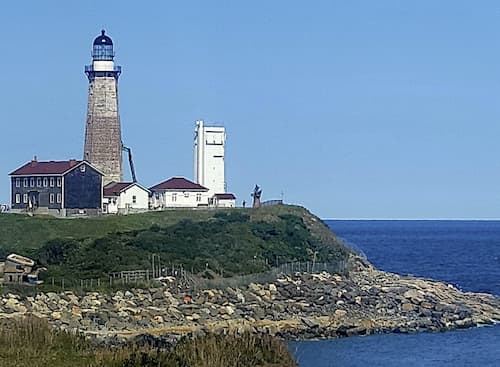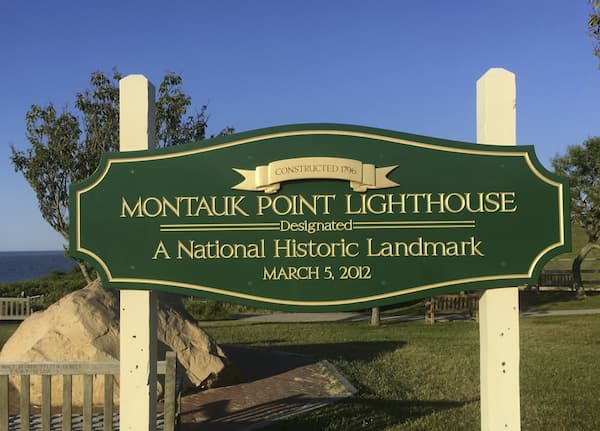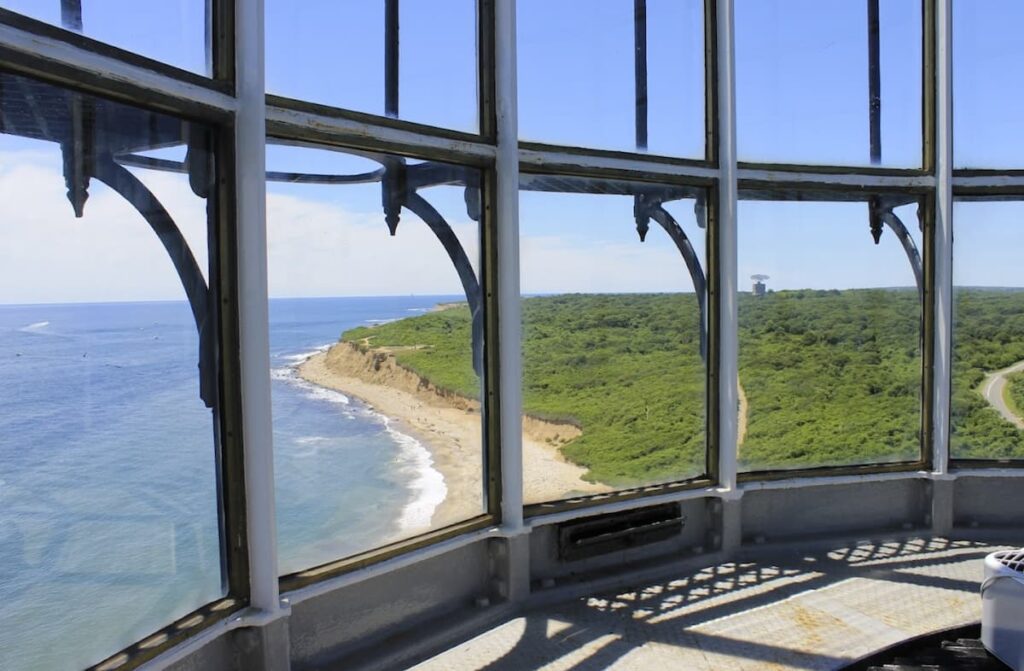
The Montauk Point Lighthouse offers a rich history of America in one place. It has centuries of history dating back to the Native Americans and was even a crucial location during George Washington’s time and the World Wars.
Established in January 1962, the Montauk Historical Society (MHS) was founded as the town quickly transitioned from a peaceful fishing community to a crowded summer resort. Researching, studying, preserving, and sharing the past for it to become a component of the museum’s consciousness.
Richard T. Gilmartin, the first president, was the inspiration behind the creation of the Montauk Historical Society. In the 1950s, while working as East Hampton Town Clerk, he preserved, indexed, and cataloged the 1648–1955 East Hampton Trustees’ Journals, which are still valuable for historians and researchers. In addition, he served as a mentor to a group of young people he termed the “Explorers Club,” taking them on excursions across the South Fork and Montauk every month to instill in them the value of historic preservation.
The Montauk Point Lighthouse, Montauk Indian Museum, Second House Museum, and Carl Fisher House are all controlled by the Montauk Historical Society. It is a privately financed, nonprofit organization founded fifty years ago.
At the tip of eastern Long Island sits the renowned Montauk Point Lighthouse. The beautiful lighthouse offers breathtaking 360-degree views of the Atlantic Ocean and Block Island Sound. No trip to Montauk is completed without a visit to its iconic lighthouse, whether you’re visiting for a week or just a day.
President George Washington authorized the building of a lighthouse at Montauk Point in 1792 because it was seen as such a significant and risky piece of land. One of Long Island’s most well-known and adored symbols is the Montauk Point Lighthouse. The fourth-oldest operational lighthouse in the country, it was the first to be constructed in New York. It was among the 12 lighthouses to receive this distinction when it was recognized as a National Historic Landmark in 2012.
The U.S. government carried on a long tradition when it built the lighthouse because, according to folklore, the Montauket tribe would light signal fires on the island to call leaders and warriors to an assembly. Large flames were maintained blazing on the hill throughout the Revolutionary War by the British to serve as a signal for their vessels blocking Long Island Sound at Montauk Point.
The Montauk Point Lighthouse Museum exposes guests to the rich legacy that all Americans share, from the origins of the earliest settlers to the complexity of America today. Visit the lighthouse grounds during your visit to take in Montauk’s breathtaking scenery. Discover stunning vistas from the top of the lighthouse, a famous structure that has guided seafarers for over 225 years.

The cliff near Long Island’s eastern tip was named Turtle Hill because it reminded the early European inhabitants of a turtle’s back. The Montauk Indians, a member of a coalition of four regional tribes that also included the Shinnecocks, Manhassets, and Cutchoges, are referenced in the point’s present name, Montauk Point.
When the initial European immigrants came to Long Island during the seventeenth century, the four chiefs—all brothers who had received power from their father—had control over most of the island. The Manhassets had several ancient folk tales handed down through the generations, including the claims that their tribe had been residing there since the glaciers from the last Ice Age had melted.
As legend has it, they had once been able to cross the Hell Gate by hopping from stone to stone, and Plum Island had earlier been linked to Orient Point.
The colonists left the Montauk region primarily undeveloped. Until about 1879, there were no permanent residences east of the Napeague Harbor beside the lighthouse, some caretaker cottages, and some Native American occupants. Between 1655 and 1926, it seems that just three different owners owned this whole island area.
Virtual Museum Tour

Want to visit but can’t? The closest you can go to seeing the lighthouse without leaving your house is on their Virtual Visit website. View their webcams and interactive virtual museum tour.
Use the mouse to go right, up, left, and down through the Montauk museum, and click on the arrow to advance to the next room. For detailed images and further information about specific pieces in the collection, tap on the I. To get the most incredible experience, select “full screen” from the menu that appears when you click on the three dots in the upper right corner of the image. Don’t forget to watch the video walk to the tower’s top to observe the sunset while you’re in the Oil Room!
Short Facts
- Approved by President George Washington’s Second Congress in 1792.
- The builder was John McComb, who also constructed two other lighthouses and the Gracie Mansion still in existence at Eaton’s Neck and Cape Henry in Virginia. Construction started on June 7, 1796, and was finished on November 5, 1796.
- The first in New York State, the fourth oldest functioning lighthouse in the United States, was built of Connecticut sandstone blocks that are 8 inches high and range in length from 18 inches to 44 inches, with a foundation that is 13 feet deep and 9 feet thick.
- The walls are 3 feet thick at the top and 6 feet thick at the base.
- Ira Winn of Portland, Maine, extended 30 feet to its height and constructed a new lantern chamber in 1860.
- The tower is 110′ 6′′ tall.
- The tower’s 3-12 order Fresnel lens, which was used in the tower from 1903 until 1987 and is now on display at the lighthouse museum, is accessible via 137 iron steps.
- Up until 1939, the civilian keepers of the lighthouse were in charge before the Coast Guard took control.
- The Army relocated into the lighthouse during World War II and constructed the big tower adjacent to it to use as a submarine watch tower.
- A lighthouse was designated as a National Historic Landmark in honor of its crucial significance in American nautical history.
- The Coast Guard leased the property in 1987, and the Montauk Historical Society acquired it in 1996. The upkeep of the navigational aids is still the responsibility of the Coast Guard. The light may be seen 19 nautical miles away and flashes once every five seconds.
